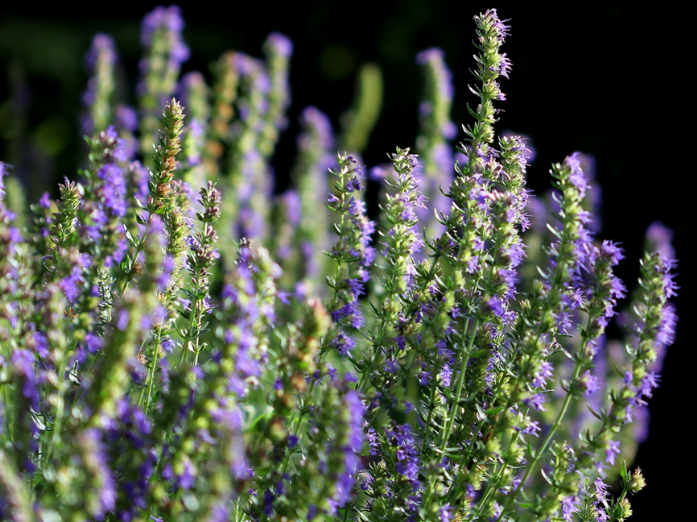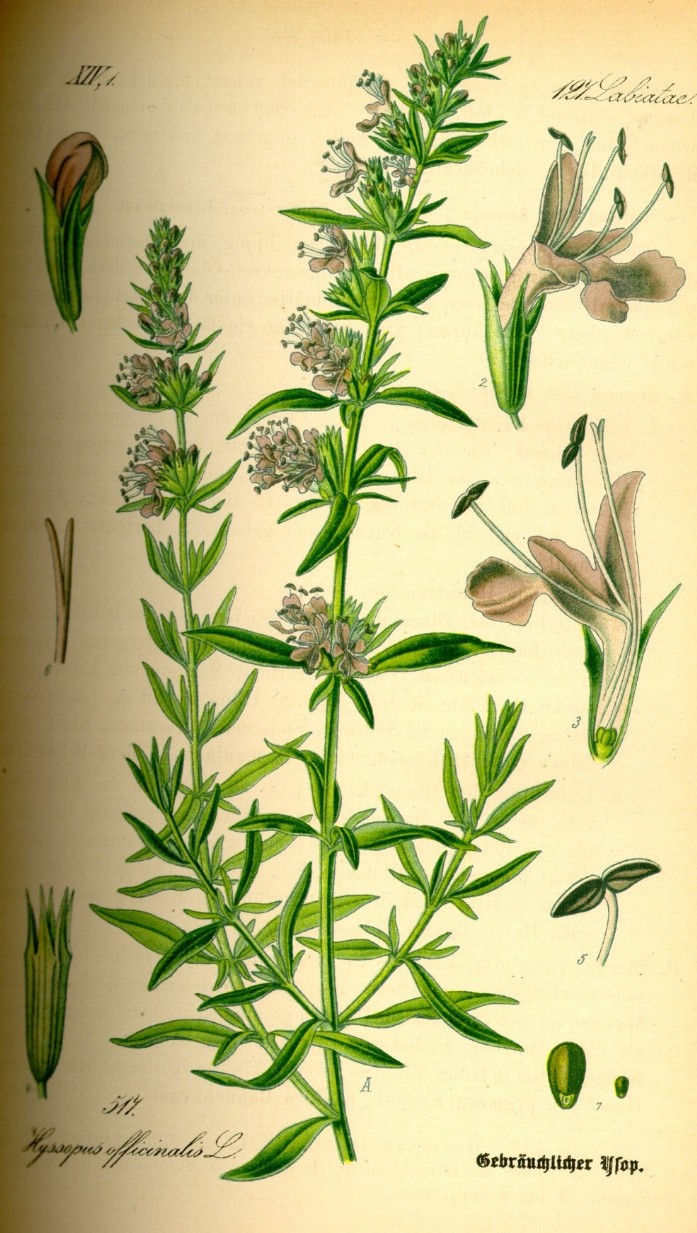Hyssop
Herbs A-Z > Know your herbs
Hyssop - Hyssoppus officianalis

Hyssop - Hyssoppus officianalis
Hyssop is a low spreading woody plant that comes from the Mediterranean countries and the middle-east and is a member of the Lamiaceae along with nettle and mint. The small dark pinnate leaves are complemented with flower spikes of blue, pink or (sometimes) white. This is a plant with ancient uses and mythical qualities and was used for ‘purgation’ or religious purification and in sacrificial ceremonies.Today hyssop (also known as anise hyssop) has a role in medicine, as a food and drink flavouring and its flowers are prized by beekeepers.
Hyssop as food
Hyssop has a bitter taste and tends not to be used as a fresh culinary herb. It is used as a potent flavouring in liqueurs and is particularly known as an ingredient of Chartreuse. The dried leaves can be used to make a tea, generally used to regulate blood pressure or to treat chesty coughs or improve digestion.
Hyssop as medicine
Hyssop has value in the treatment of cardiovascular disorders. As it is both a sedative and a stimulant it can be used to regulate blood pressure, either high or low, with correct dosing. It is primarily used to treat chronic catarrh, bronchitis and coughs having expectorant properties. In weak dilutions it is used to aid the urinary, digestive and nervous systems.

Prof. Dr. Otto Wilhelm Thomé Flora von Deutschland, Österreich und der Schweiz 1885
Properties of hyssop
The essential oil contains thujone and phenol which have antiseptic properties. A word of warning - the high concentrations of these and other chemicals in hyssop are able to stimulate the central nervous system and can produce fits, even in low doses.
Notes on the cultivation of hyssop
Hyssop is drought tolerant and can be planted in chalky or sandy soils and does not require much feeding. It thrives best in full sun and can be pruned to form a low hedge. Pruning will help to extend the life of the plant.
Hyssop can be planted as seed in the spring or it can be propagated from roots or from cuttings taken in autumn or spring.
As a companion plant, hyssop is valuable amongst cabbages as a deterrent to the cabbage white butterfly and it is used in vineyards where it is believed to improve the grape yield.
